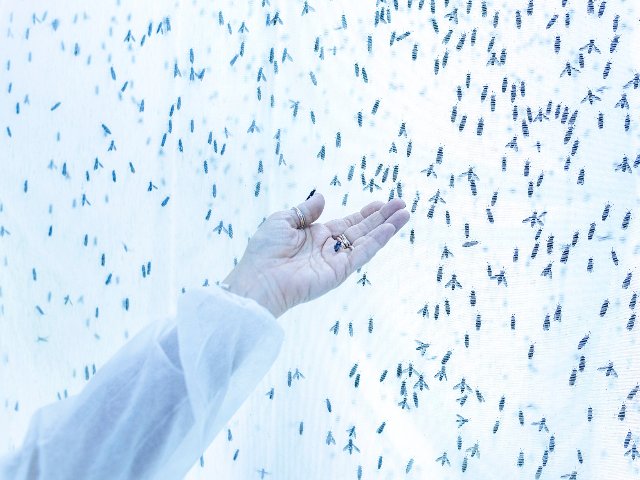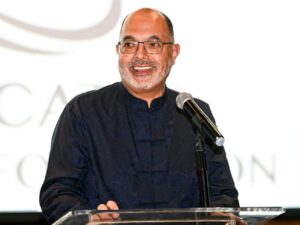[imagesource:Maurizio di Petro]
Photography competitions of all kinds and calibres are announcing their winners and showing the world different ways of seeing the new and the same old.
While the likes of TIME and National Geographic are excellent at shedding new light on the world’s biggest issues, this year’s six winners of the Environmental Photographer of the Year Competition are just as remarkable.
The annual competition showcases global environmental photography to inspire change and climate action with this year’s six winners coming primarily from countries most affected by climate change including Bangladesh, India, and Argentina.
With entries from over 159 countries, these photographers are on the front line of the climate crisis using photos as a tool to spark action and generate awareness to protect and fight against the pressing environmental challenges facing our planet. Bushra Hussain, president of CIWEM said, “The winning submissions are startling and thought-provoking and we urge you to take a look and feel the story behind each photo.”
The competition features two grand title awards and four further award categories. The grand title was won by Maurizio di Petro, a professional photographer based in Italy, who was recognised for his photo of an innovative insect food experiment at the University of Turin, per Oceanographic Magazine:
The photo forms part of Maurizio’s ‘Zero Hunger’ series, documenting worldwide food insecurity and the solution presented by insects. He commented: “My home country of Italy is experiencing a frightening reality: 22% now face food insecurity, and this number is only set to increase as climate change intensifies.”

“Through my photographs, however, I don’t just want to document the problem, but also offer a way forward. By photographing experiments of potential new food sources, I hope to break open the closed corridors of academia and raise awareness of this solution around the world. Only by showing a way forward can we inspire people to abandon a doom-drenched view of the world and fight for a better one.”
Led by Professor Laura Gasco, the research project assesses the impact of incorporating insect flour into the diets of rainbow trout and chickens to determine its potential as a nutrition source, particularly as food scarcity increases in line with a growing population. The soldier fly is rich in proteins and a highly sustainable food source, thanks to its minimal water and soil consumption. By feeding on food waste, these insects also contribute to a circular economy.
Then, 18-year-old Solayman Hossain nabbed first place in Nikon’s Young Environmental Photographer of the Year (21 and under) category for his colourful photo showing a farmer and his cows forced to wade through floodwater to find food:
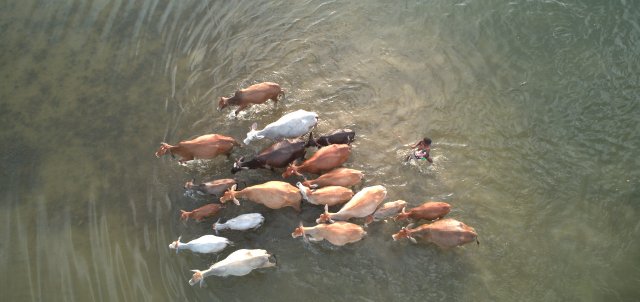
Jahid Apu, a professional photographer from Bangladesh, took home a category win in the MPB Vision of the Future category for his photo of a bridge surrounded by a sea of plastic waste, entitled ‘A Walk Through Trash’:
Jahid said: “Whenever I walk over this bridge, I always wonder how we can survive with so much plastic. Children are often playing in the garbage, with nearby communities forced to live around this sea of waste. I want my photo to be a wake-up call, encouraging people around the world to put an end to plastic pollution once and for all.”
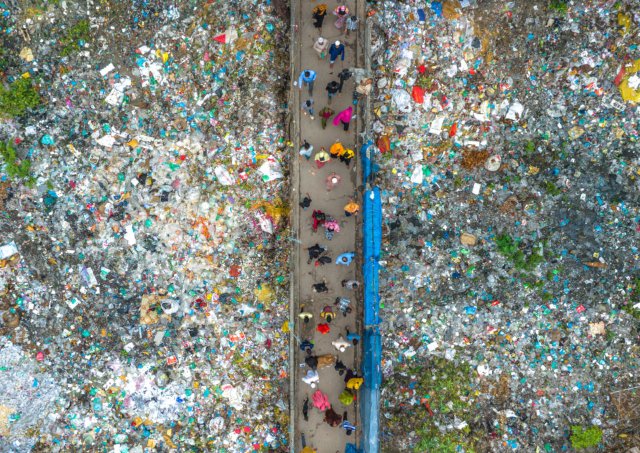
“My home country of Bangladesh has been hit especially hard by climate change. As the crisis intensifies, photographers must abandon pretty nature pictures for ones that confront our changing planet and inspire us to protect it.”
For his photo of a rare luminescent coral, Nicolas Marin, a 24-year-old photographer, National Geographic underwater explorer, environmental activist and former professional tennis player based in Argentina, won the Recovering Nature category. Documenting and protecting the oceans is a cause close to Nicolas’ heart, as he encounters fishing nets, straws and endless floating garbage while diving.
He commented: “We used specialised dive lights that wouldn’t disturb marine life, and in the darkness, you could only see where the lights were pointed. On this occasion, I witnessed something I had never seen before: a coral glowing like a Christmas tree.”

“This photo is important because it showcases the wonder and fragility of marine life and the need to protect it. Bioluminescence is a fascinating natural phenomenon that indicates the health of the ocean. Coral, as one of the foundational pillars of these ecosystems, faces significant challenges due to climate change, pollution, and habitat degradation.”
Marin says that while there are challenges, there are also solutions underway, such as promoting sustainable fishing practices, establishing marine protected areas, and undertaking efforts to mitigate climate change. For him, he says, “corals are hope”.
The Adapting for Tomorrow category winner this year is Anirban Dutta, a photographer and high-school teacher from West Bengal, whose multi-exposure image of a drongo bird whizzing about trying to catch termites turned heads:

Termite species are drawn towards light sources to seek their mates every year before the monsoon season begins. While out and about witnessing this, Anirban spotted a crafty drongo seizing the opportunity to snatch termites flying around the light source. The drongo’s presence at the urban petrol pump suggests waning food sources in the wild and indicates how species are adapting to a changing world.
Lastly, Shafiul Islam, a Bangladesh-based professional photographer, scored a win in the Keeping 1.5 Alive category for his photo of buffaloes scouring parched grasslands for food during a drought, in Gaibandha, Northern Bangladesh.
The area has experienced a prolonged dry spell, which has depleted pastures, causing food and water shortages for the buffaloes. To cope, herdsmen provide dry hay as an alternative to the scarce grass.
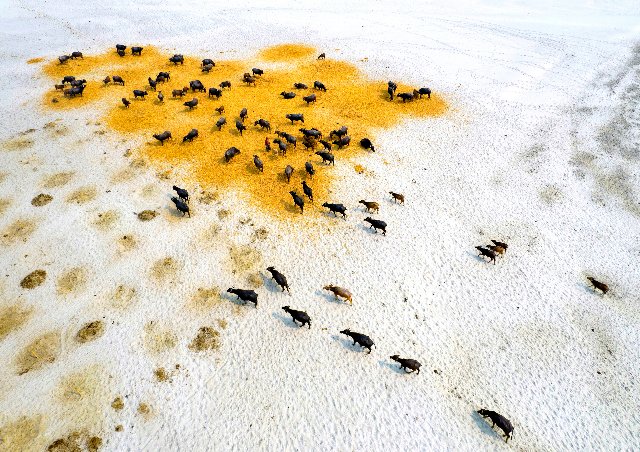
As usual, this year’s competition proceedings included an ethics panel, ensuring accountability and transparency in photo selection, making sure there are no questions of consent, permits, and ethical representation of people and wildlife.
As Sam Sutaria, CEO at WaterBear, a competition partner, said: “Facts and statistics can make climate change seem distant, but these photos bring the reality of the crisis up close, urging us to take action”, adding that “if we can document climate change so creatively, we should be assured of our ability to tackle it too”.
Check out more from the competition over here.
[source:oceanographicmagazine]

